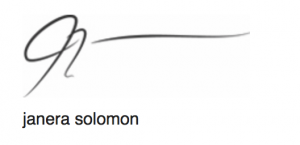On Art and Community
7.05.18
KST launched, “Pay-What-Makes-You-Happy,” as our ticketing model in 2015. Like ideas, it started with a, “what if…” rather than a fully formed concept. For some, it’s a feel-good venture, and others a stronger statement about inclusion; for us it is both.
Pay-What-Makes-You-Happy (PWMYH) furthers Kelly Strayhorn Theater’s role as cultural hub where all of Pittsburgh can come together to make new connections, encounter great artists, and take part in lively energy of East Liberty.
What should arts organizations do in rapidly gentrifying neighborhoods? KST was invited to be part of the Kresge Arts and Culture Cohort with PolicyLink and this is the question we are exploring.
We have complicated choices. Should we turn our backs on our old audiences, and embrace the new? Or, take on the more difficult task of bringing people, who don’t normally socially mix, together?
A little bit of context.
According to recent NEA study, Performing arts about 37% of adults attend a performing arts event. In Pennsylvania, the average is 35%. We don’t have Pittsburgh numbers but in our state it means that nearly 70% of our neighbors, friends, colleagues and family members, do not on a regular basis, attend a performing arts event. And, when they do, often it is by invitation.
This low participation rate and the increasing economic (and cultural divides) are the reasons why KST launched our ticketing model, Pay-What-Makes-You-Happy. In the context of economic and cultural gentrification, this approach takes on new significance.
We find ourselves with a bigger mission. We are trying to encourage more than mutual co-existence. We want shared sense of belonging. By definition, a community. Shared values and commitment.
PWMYH, like many choose your price models, is designed to empower and encourage participation.
What it is not.
It is not a marketing campaign, (though we agree Pay What Makes You Happy sounds better than “Pay What You Can! It is not an excuse to pay nothing. And, it is not a social welfare program.
PWMYH is one attempt removing barriers. art is not only for “those people.” It is about agency — choice. This is about community and bringing people together, respectfully; with their humanity intact — so discounted tickets or comps if you are in “need.”
In a cultural landscape where nearly 70% of adults no not regularly participate in an arts and culture on a regular basis, this is about encouraging a different kind of cultural risk taking. How will you know what you don’t know, or challenge what you think you know without trying something new, doing what you usually do.
I hope art changes our perceptions.
We know that arts, whether it is in a theater or in a church basement, makes a difference, a TRANSFORMATIVE difference in people’s lives.
Because of KST’s location, at the intersection of low income neighborhoods, and Pittsburgh’s wealthiest, this has been and continues to be critical question for us. East Liberty has a history as a meeting place – a hub. It is a diverse community — all kinds of people are here. Everyone benefits from this diversity.
In this neighborhood, and on this avenue, as I’ve experienced it, we are a community of equals. Everyone’s humanity is recognized. For people who live, work and create here, diversity, especially in the arts, isn’t tolerated it’s celebrated. I hope its an ideology the entire city will embrace.
At KST, generosity is matched with creativity to make transformative art experiences come to life,” says executive director janera solomon. “Every day, we are inspired by the giving spirit of the artists, philanthropists, foundations and audiences that make KST events a neighborhood celebration. Pay What Makes You Happy is a bold experiment that invites everyone’s participation in our uniquely diverse programming.”
Given the politics of our community, our world, the effort might raise all kinds of questions about equity, access, As far as we know, these two very different american icons never met. They had very different life experiences, and though both artists, lived very different artistic lives.
“In the 1970s, 70 percent of people lived in middle class neighborhoods, but today only 40 percent do. The effect is that people in different socioeconomic groups do not spend time with one another. That lack of contact causes different points of view for sure, but it also leads to very different outcomes in life.”
https://www.nytimes.com/2017/11/07/your-money/money-bubble-economic-inequality.html

